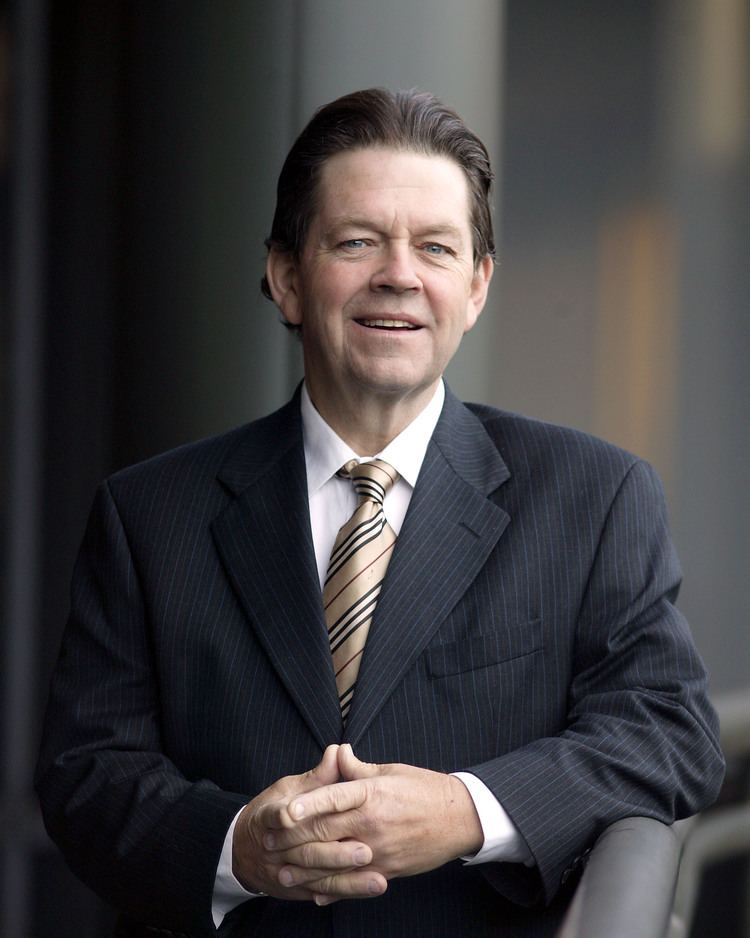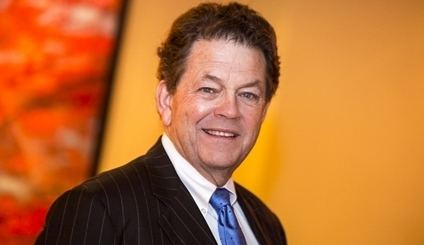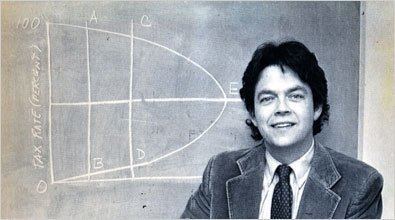Nationality American Role Economist Name Arthur Laffer | Contributions Laffer curve Fields Political Economy | |
 | ||
Born August 14, 1940 (age 85) ( 1940-08-14 ) Youngstown, Ohio Alma mater Stanford (PhD, 1971; MBA, 1965)Yale (BA, 1963) Education Stanford University, Yale University Influenced by John Maynard Keynes, Ibn Khaldun, Friedrich Hayek Books The End of Prosperity: How High, An Inquiry into the Nature an, Return to Prosperity: How Ame, The Private Equity Edge: Ho, Eureka!: How to Fix California | ||
School or tradition Supply-side economics Similar Rick Levin, John Howard Lindauer, Stephen Marglin | ||
America s roundtable dr marc miles economist and co author with arthur laffer part ii
Arthur Betz Laffer (; born August 14, 1940) is an American economist who first gained prominence during the Reagan administration as a member of Reagan's Economic Policy Advisory Board (1981–89). Laffer is best known for the Laffer curve, an illustration of the theory that there exists some tax rate between 0% and 100% that will result in maximum tax revenue for governments. He is the author and co-author of many books and newspaper articles, including Supply Side Economics: Financial Decision-Making for the 80s. Laffer is Policy Co-Chairman (with Lawrence "Larry" Kudlow) of the Free Enterprise Fund and serves on the "Board of Scholars" of the American Legislative Exchange Council (ALEC). Mr Laffer was one of four economists who acted as advisors to Donald Trump's successful 2016 campaign for the presidency of the United States.
Contents
- America s roundtable dr marc miles economist and co author with arthur laffer part ii
- Lessons from the reagan revolution the case for lower taxes dr arthur laffer
- Life and career
- Laffer curve
- Professional activities
- Publications
- References

Lessons from the reagan revolution the case for lower taxes dr arthur laffer
Life and career

Laffer was born in Youngstown, Ohio, the son of Marian Amelia "Molly" (née Betz), a homemaker and politician, and William Gillespie Laffer, a president of the Clevite Corporation. He was raised a Presbyterian. Laffer earned a B.A. in Economics from Yale University (1962) and an M.B.A. (1965) and a Ph.D. in Economics (1971) from Stanford University.

While he was teaching at the USC Marshall School of Business, Laffer played a key role in writing California Proposition 13, the property-tax-cap initiative that inspired a tax revolt across the nation.

In the mid-1980s, Laffer left to teach at Pepperdine University in nearby Malibu. Laffer remained on the faculty for several years.
In 1986, Laffer was a candidate for the Republican nomination for the U.S. Senate—which he lost in the California primary to U.S. Congressman Ed Zschau who lost in the general election to the incumbent, Democrat Alan Cranston. Laffer identifies himself as a staunch fiscal conservative and libertarian. He has stated publicly that he voted for President Bill Clinton in 1992 and 1996. Laffer references President Clinton's conservative fiscal and unregulated market policies as cornerstones of his support.
In 2006, shortly before the 2007 financial crisis, Laffer lost a public bet of a penny with Peter Schiff on CNBC over whether the US stock market was heading for a crash after Laffer claimed that "The United States economy has never been in better shape."
In 2008, he was named a Distinguished University Professor of Economics by Mercer University in Georgia.
Laffer curve
Although he does not claim to have invented the Laffer curve concept (Laffer, 2004), it was popularized with policy-makers following an afternoon meeting with Nixon/Ford Administration officials Dick Cheney and Donald Rumsfeld in 1974 in which he reportedly sketched the curve on a napkin to illustrate his argument. The term "Laffer curve" was coined by Jude Wanniski, who was also present. The basic concept was not new; Laffer himself says he learned it from Ibn Khaldun and John Maynard Keynes.
A simplified view of the theory is that tax revenues would be zero if tax rates were either 0% or 100%, and somewhere in between 0% and 100% is a tax rate which maximizes total revenue. Laffer's postulate was that the tax rate that maximizes revenue was at a much lower level than previously believed: so low that current tax rates were above the level where revenue is maximized.
Numerous leading economists have rejected the view that a tax rate cut of current federal US income taxes can lead to increased tax revenue. When asked whether a “cut in federal income tax rates in the US right now would raise taxable income enough so that the annual total tax revenue would be higher within five years than without the tax cut,” 96% of economists surveyed in 2012 disagreed. In response to this survey question, Richard Thaler of the University of Chicago joked: “That’s a Laffer.” According to Greg Mankiw, chairman of the Council of Economic Advisers under President George W. Bush, most economists have been very skeptical of Laffer's contention that decreases in tax rates could increase tax revenue, at least in the United States. In his textbook, Mankiw states, "there was little evidence for Laffer's view that U.S. tax rates had in fact reached such extreme levels."
Laffer is currently an economic adviser to Kansas Governor Sam Brownback, who in 2012 zeroed out state tax liability for approximately 330,000 of the top wage earners in the state. The state, which had previously had a budget surplus, experienced a budget deficit of about $200 million in 2012. Drastic cuts to state funding for education and infrastructure have been implemented because of the budget deficits.
Professional activities
Laffer is the founder and CEO of Laffer Associates in Nashville, Tennessee, an economic research and consulting firm that provides global investment-research services to institutional asset managers, pension funds, financial institutions, and corporations.
He sits on the board of directors of several public and private companies. Laffer has been appointed to the advisory board of Sonenshine Partners, an independent investment bank focused on providing integrated strategic, financial and corporate advisory services. In 2004 Laffer joined the Board of Pillar Data Systems, a non-public Data Storage Company funded by Tako Ventures, a funding arm of Larry Ellison. In 2008, Laffer joined the Board of Alpha Theory, a non-public Fundamental Portfolio Optimization software for hedge and mutual funds. Laffer recently joined the advisory board of Collabarium Capital.
In 2010, Laffer joined the Boards of Executive Trading Solutions, an LLC providing the top technological solution for management of Rule 10b51 stock trading plans, and Consensus Point, a provider of an enterprise prediction markets platform.
In 2015, Laffer joined the board of General Employment Enterprises, (JOB), a rapidly growing staffing company located in Illinois.
Laffer also regularly writes opinion articles in The Wall Street Journal and The Washington Times.
Publications
The following is a partial list of publications written primarily by Laffer, with co-authors indicated, in order by date:
